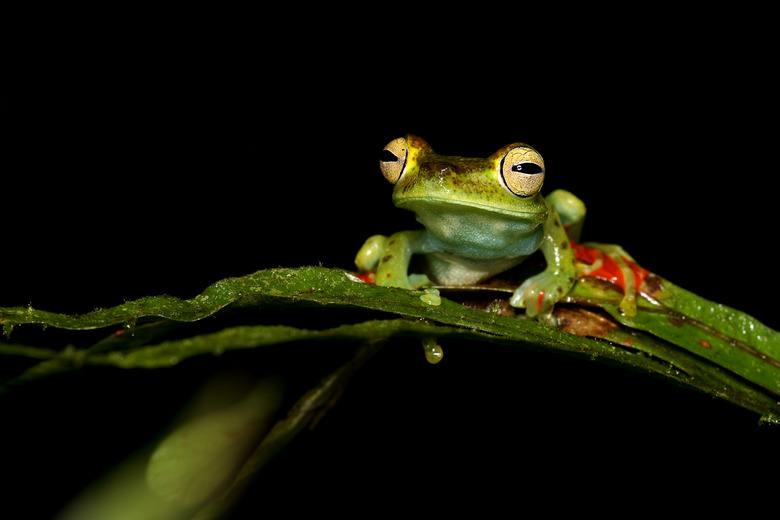How Do Amphibians Reproduce?
Sexual Reproduction
Sexual Reproduction
Amphibian reproduction has more in common with that of fish than it does of mammals or even reptiles. While all of these animals reproduce sexually (meaning that the species consists of males and females and mating involves the fetilization of eggs by sperm), reptiles and mammals reproduce through internal fertilization (inside the female) whereas amphibians practice external fertilization.
Mating
Mating
Mating for amphibians must nearly always occur in fresh water. It consists of the joining of the male and female frog, and at this time, the female lays eggs while the male releases sperm. The fertilized eggs are now left alone by both parents. The young that hatch will survive on their own.
Amphibian eggs are protected by a jelly-like substance before hatching, unlike the hard or semi-hard shells of reptiles and birds.
Metamorphosis
Metamorphosis
With the exception of some rainforest frog species, amphibians are not hatched into tiny replicas of their parents. Instead, they go through a stage of life as tadpoles, which are fishlike and have water-breathing gills and fins. These features will eventually be shed and replaced with air-breathing lungs and legs as the tadpole develops into a young adult.
Cite This Article
MLA
Vork, Lauren. "How Do Amphibians Reproduce?" sciencing.com, https://www.sciencing.com/amphibians-reproduce-4568162/. 22 November 2019.
APA
Vork, Lauren. (2019, November 22). How Do Amphibians Reproduce?. sciencing.com. Retrieved from https://www.sciencing.com/amphibians-reproduce-4568162/
Chicago
Vork, Lauren. How Do Amphibians Reproduce? last modified March 24, 2022. https://www.sciencing.com/amphibians-reproduce-4568162/
